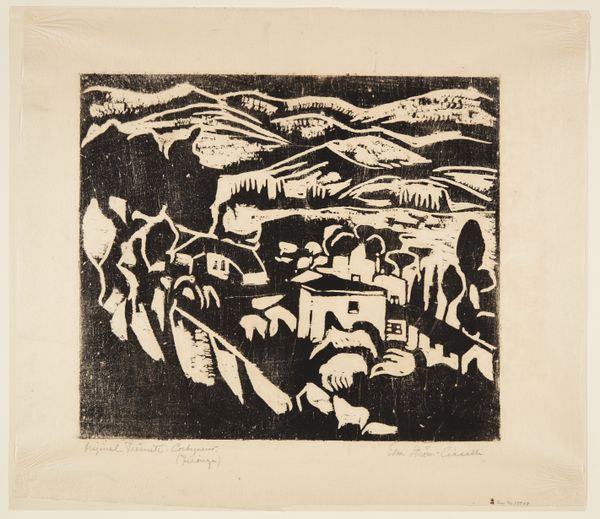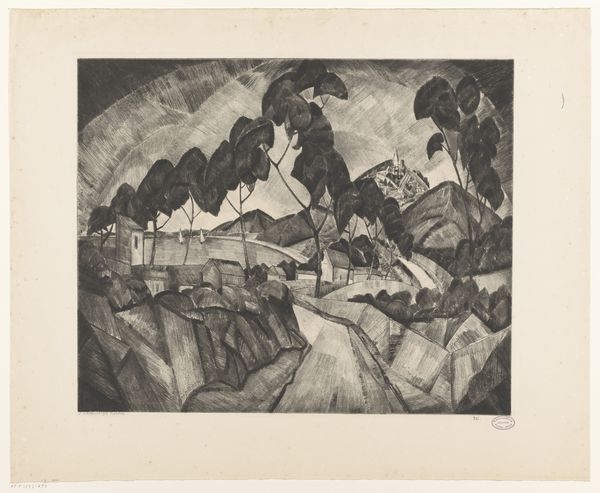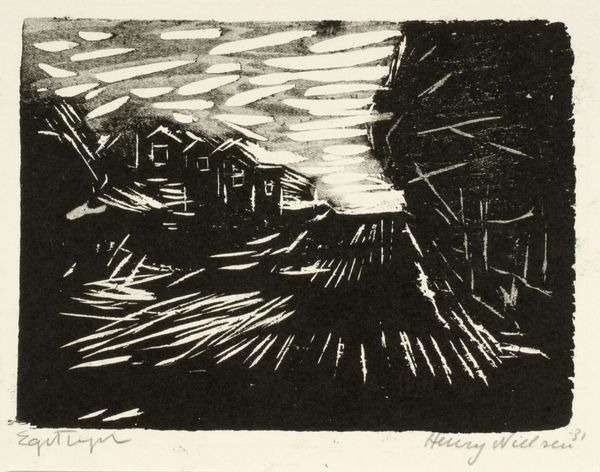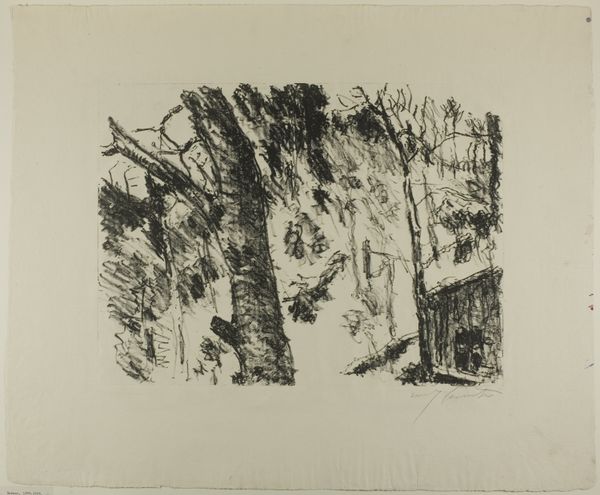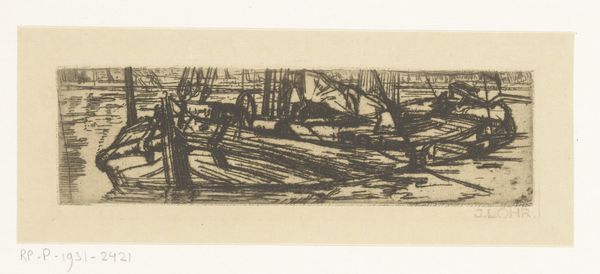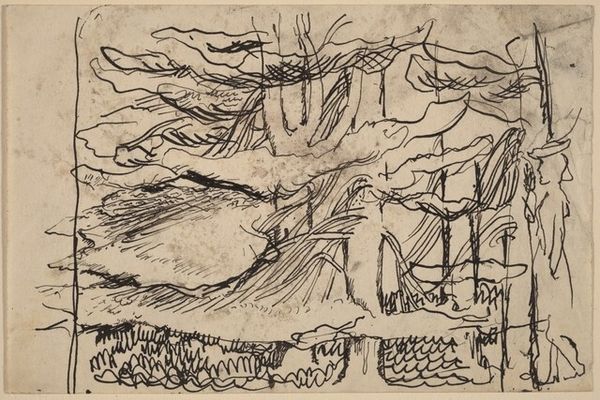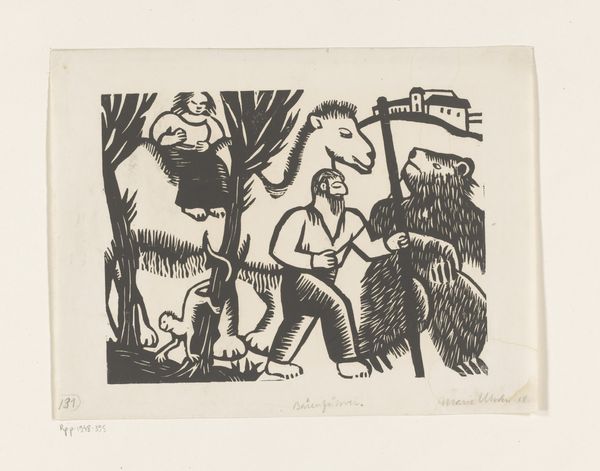
print, linocut, woodblock-print
# print
#
linocut
#
landscape
#
linocut print
#
woodblock-print
#
geometric
#
expressionism
Dimensions: height 99 mm, width 124 mm, height 112 mm, width 133 mm
Copyright: Rijks Museum: Open Domain
Jo Bezaan made this woodcut, titled ‘Sheepfolds’, in 1921. Here we see a rural scene, powerfully rendered in stark black and white. What does it tell us about the Netherlands at that time? In the early 20th century, Dutch art began to reflect growing social consciousness. The art world was becoming more professionalized, with artists forming groups and movements to promote their work and ideas. Woodcuts like this were relatively inexpensive to produce and disseminate, making them ideal for reaching a wider audience. The directness and simplicity of this style resonated with the desire for an art that spoke to everyday life, moving away from the more ornamental styles favored by the upper classes. To truly appreciate this woodcut, we might delve into exhibition records, artists' manifestos, and publications from the period. Art isn't created in a vacuum; it reflects and shapes the society around it.
Comments
No comments
Be the first to comment and join the conversation on the ultimate creative platform.

